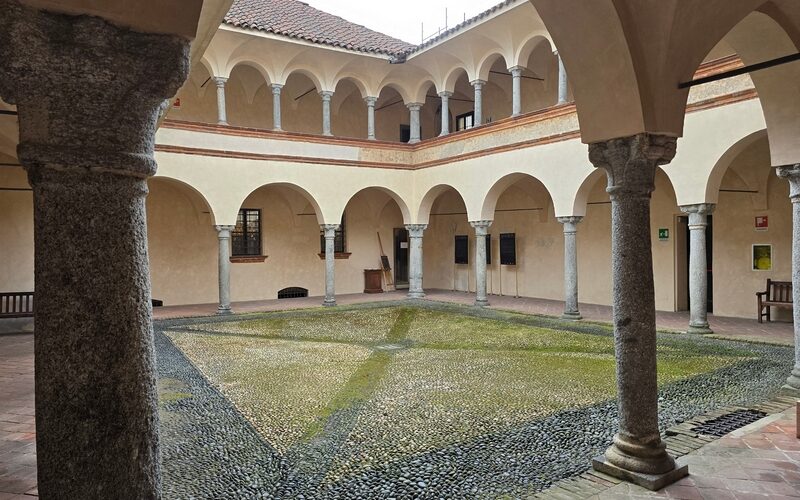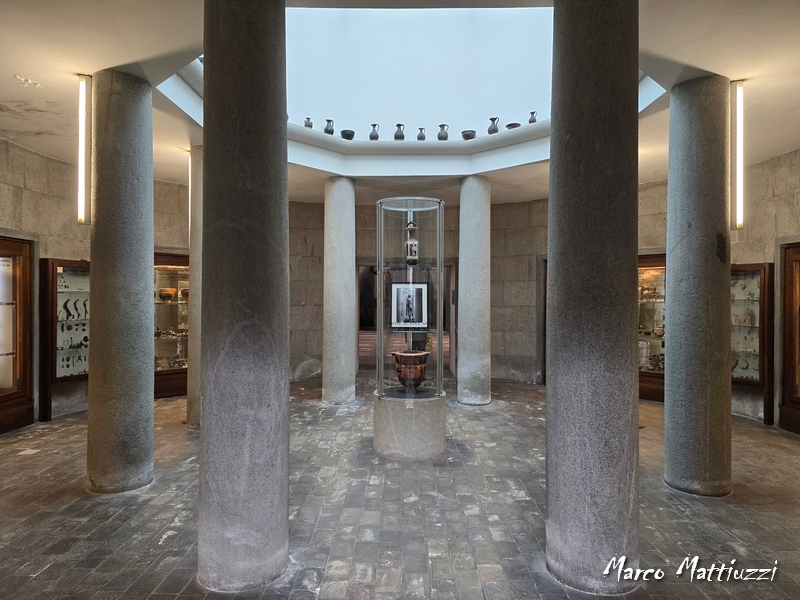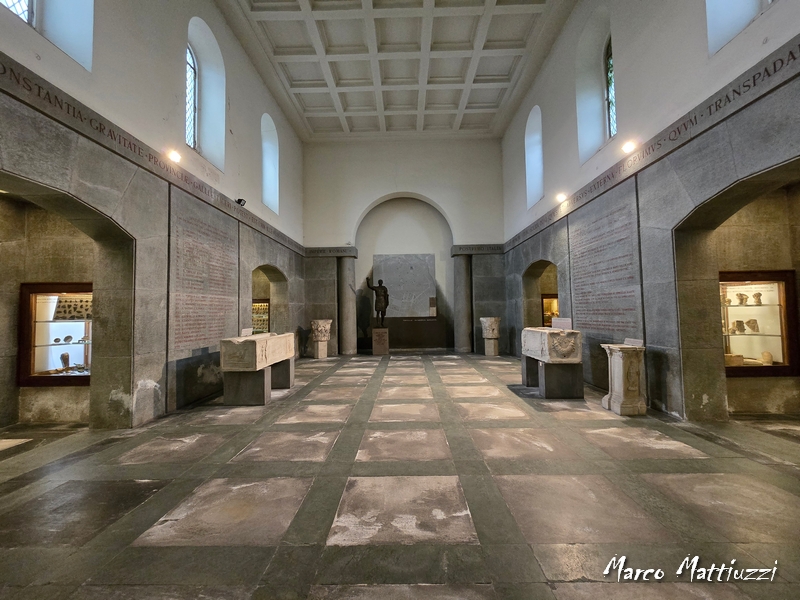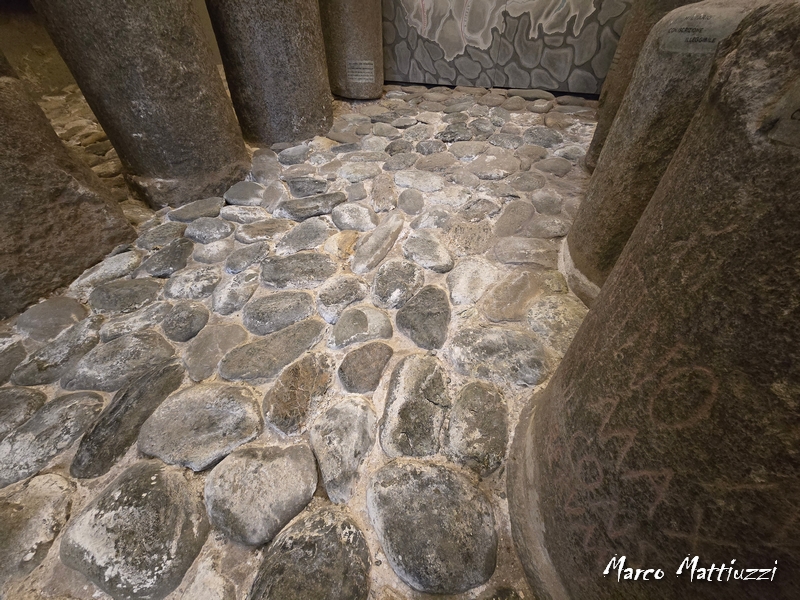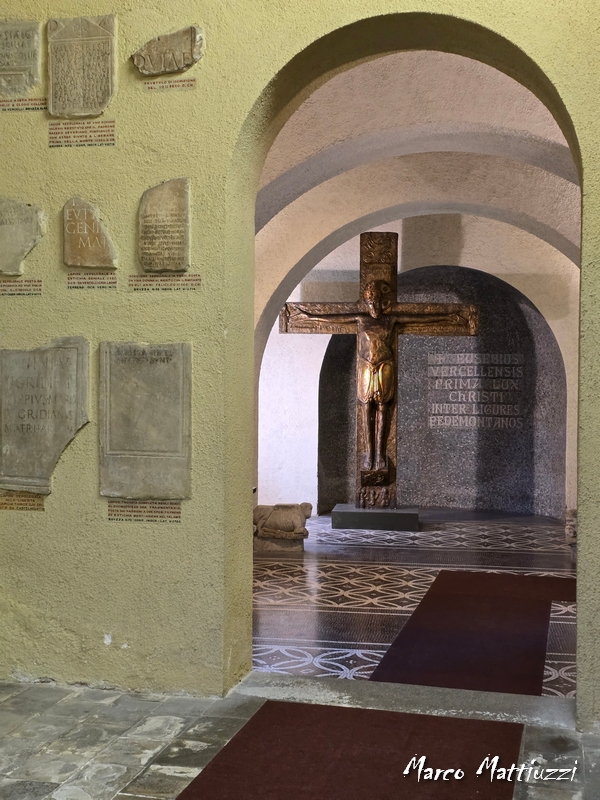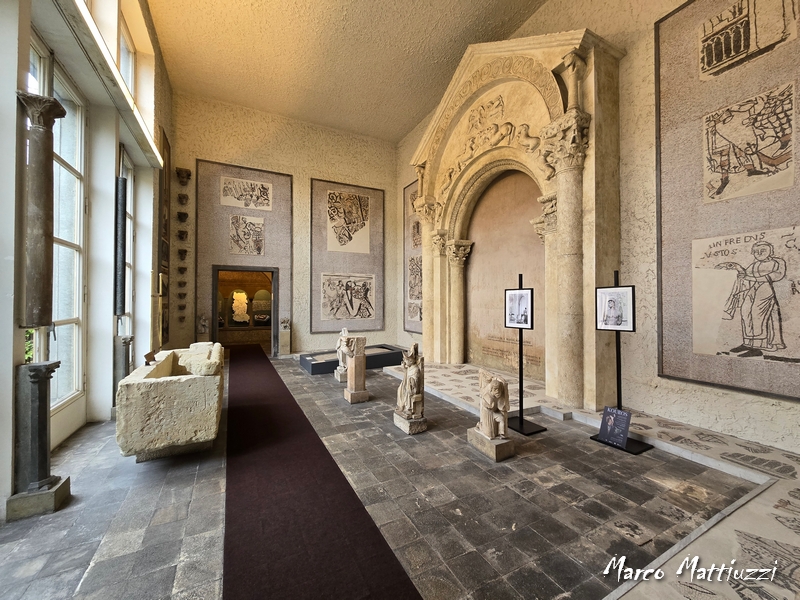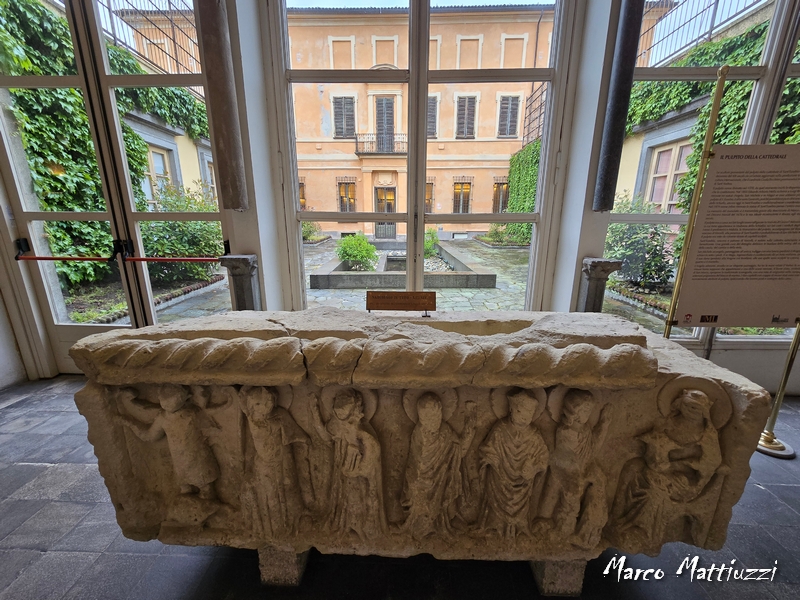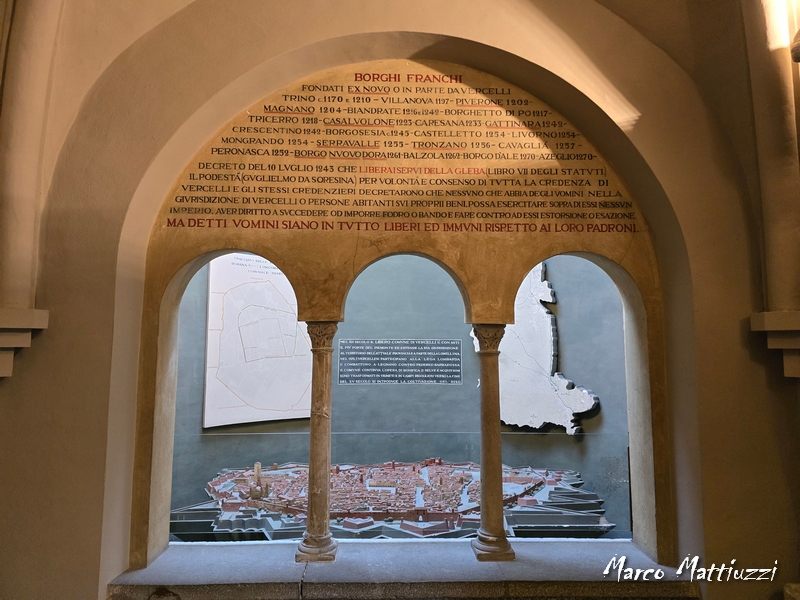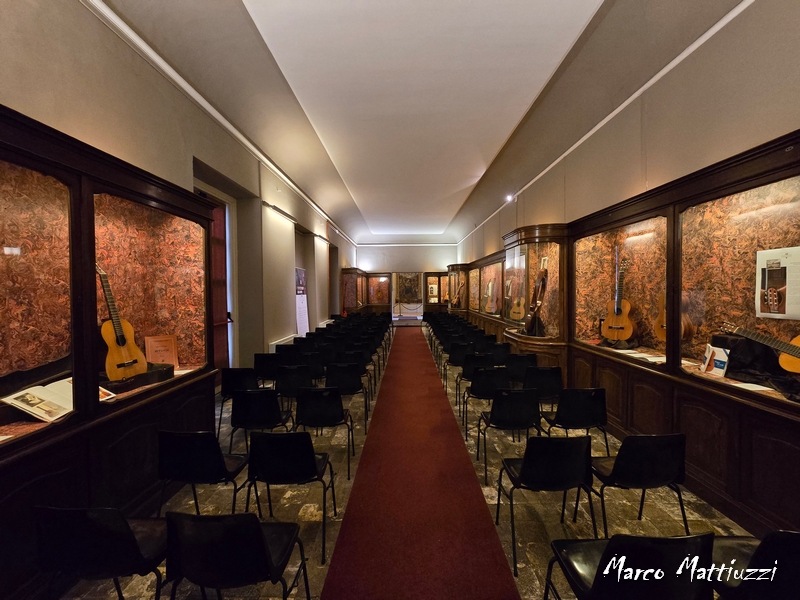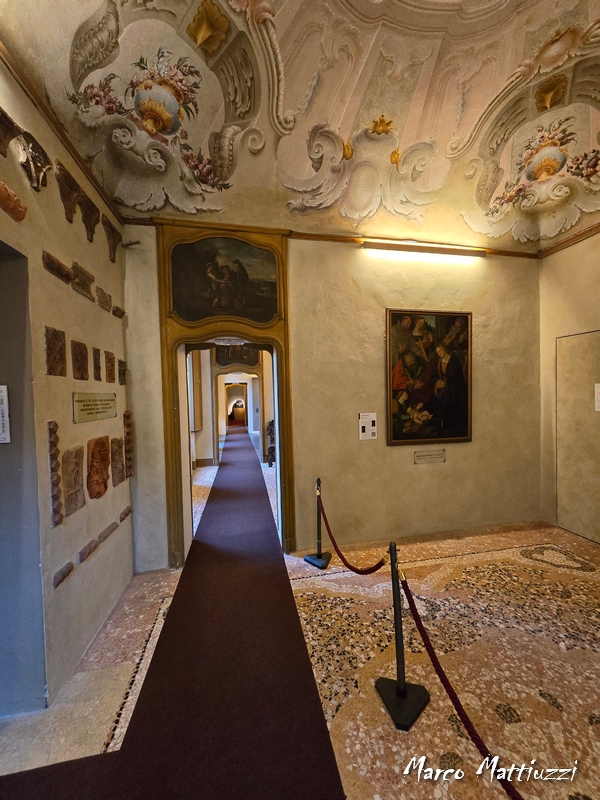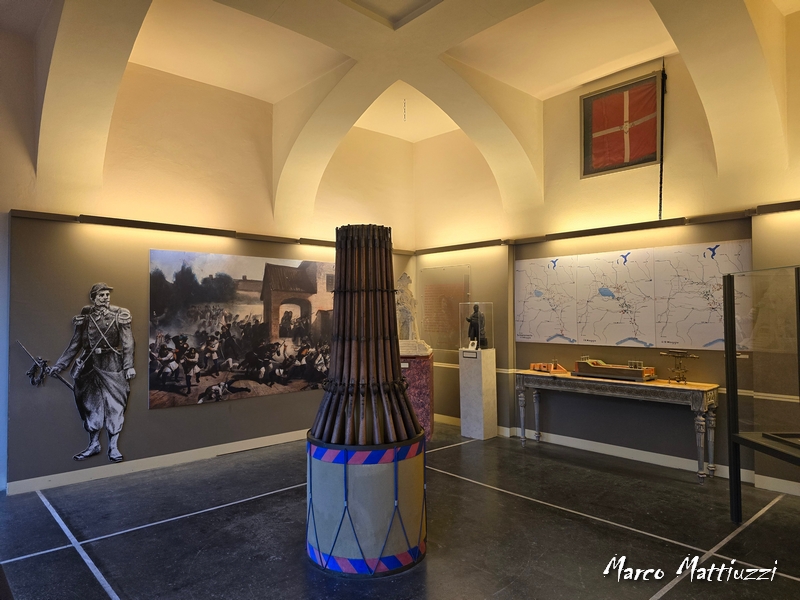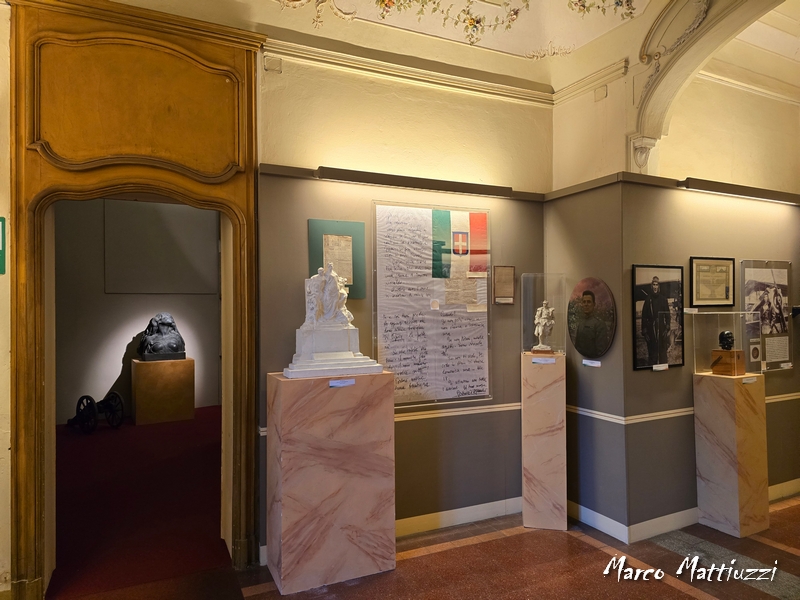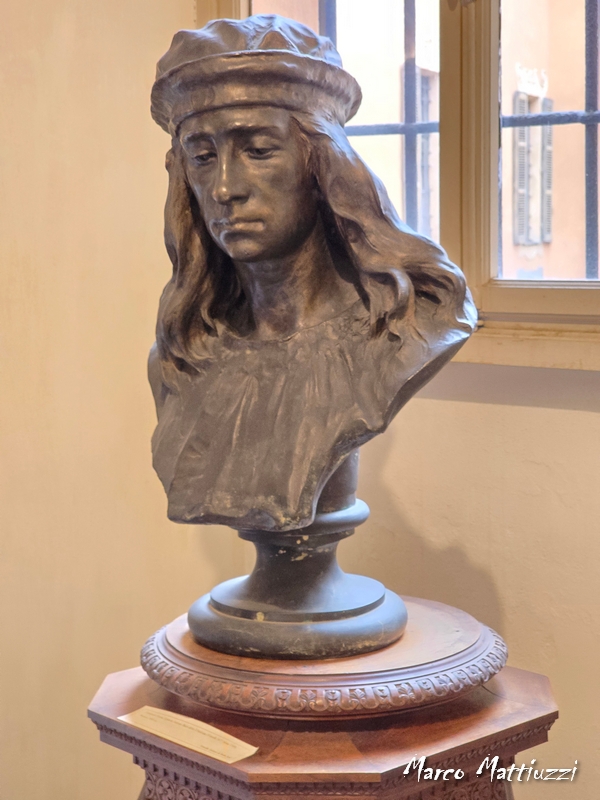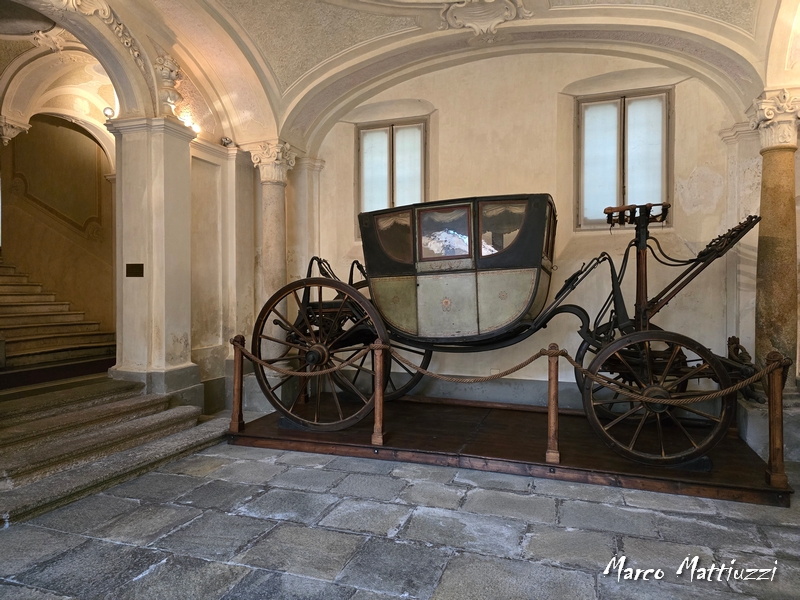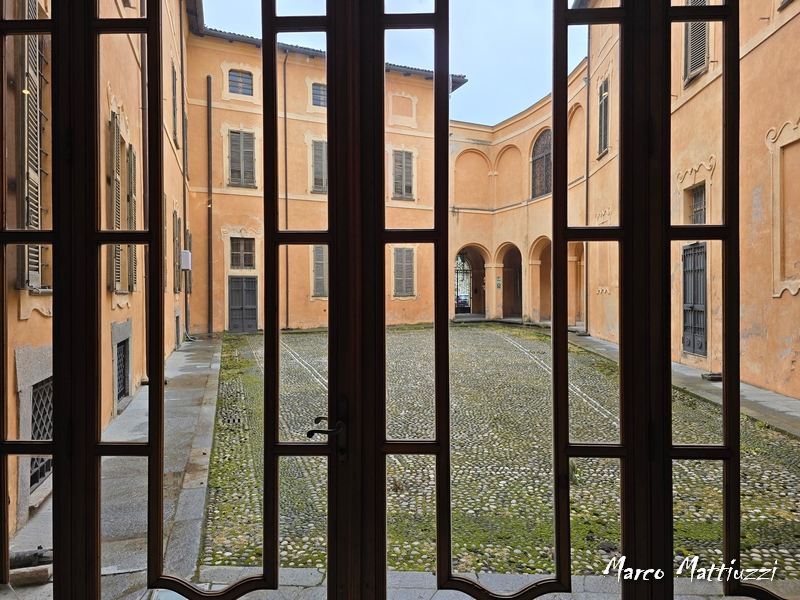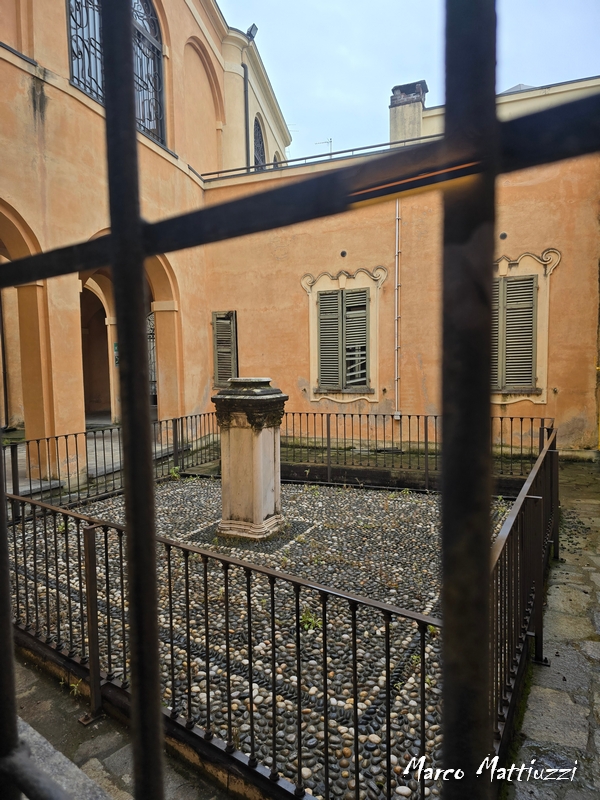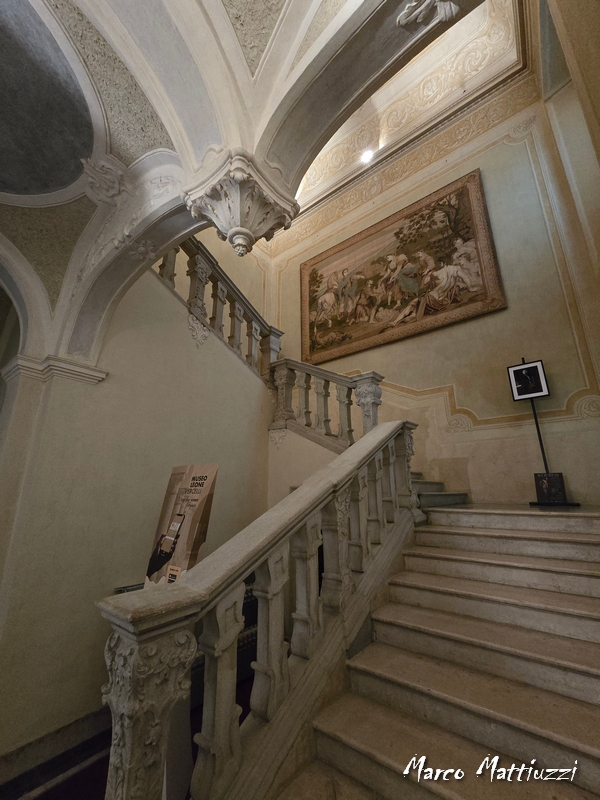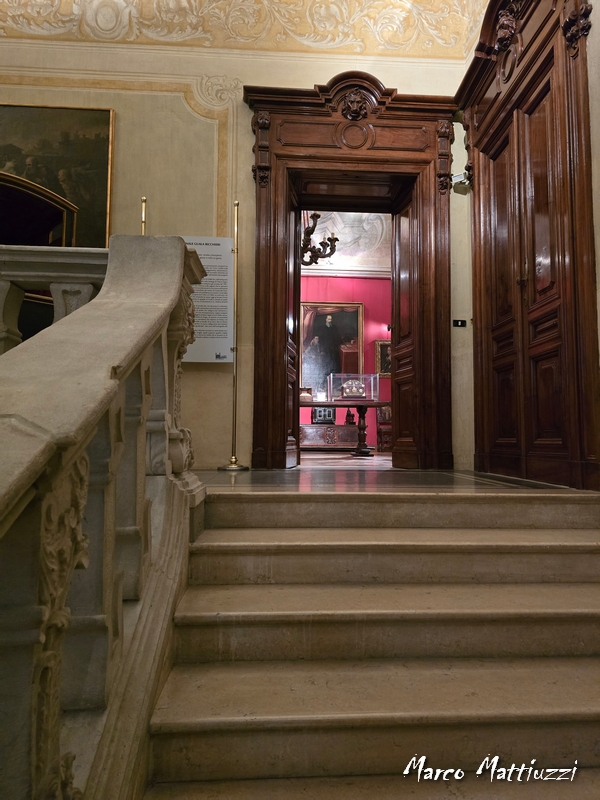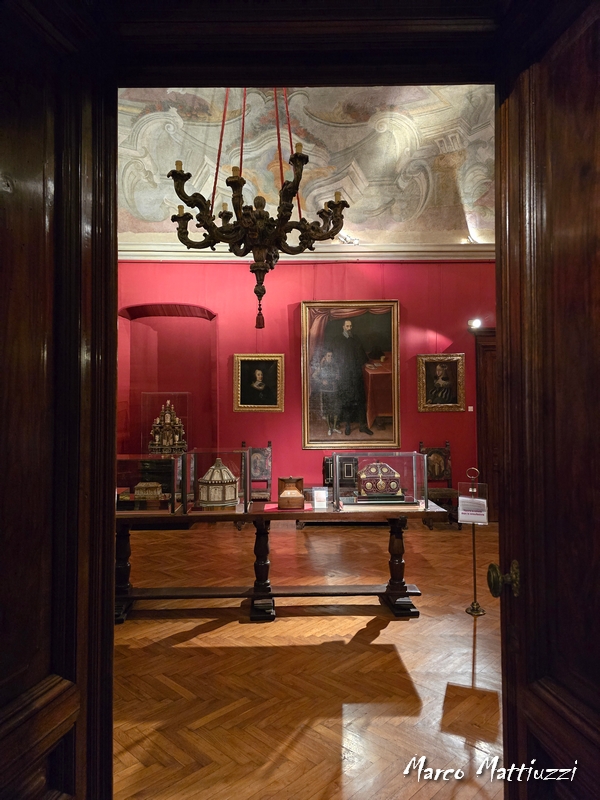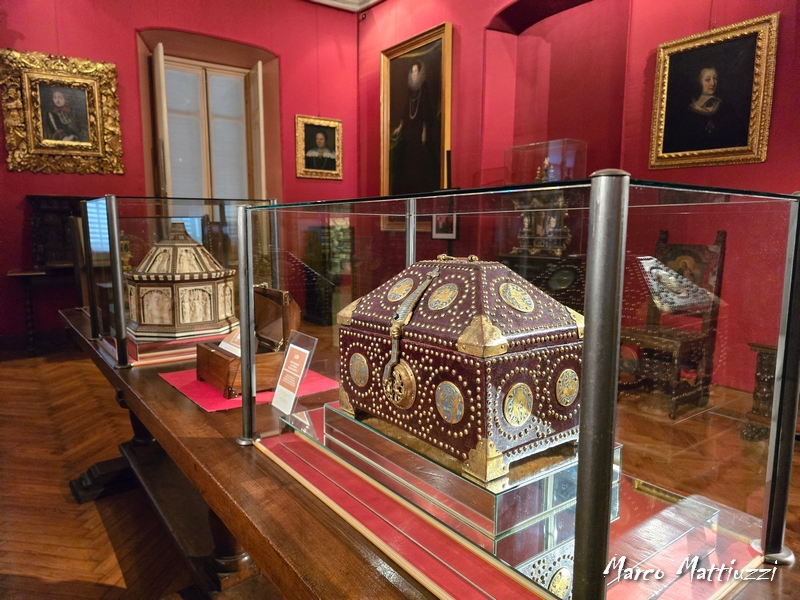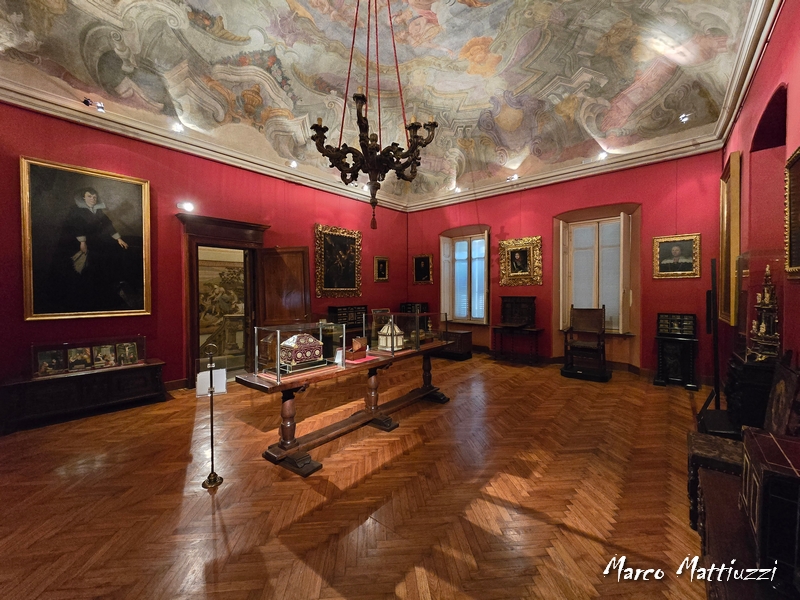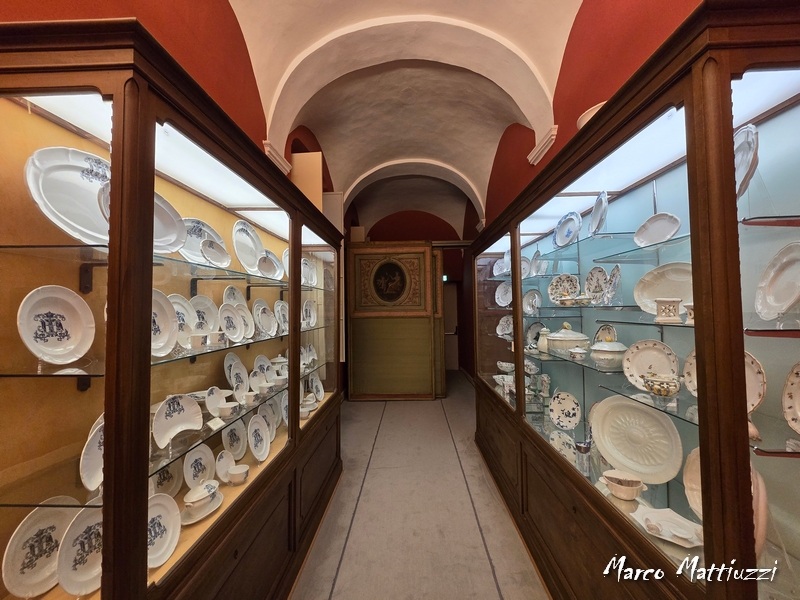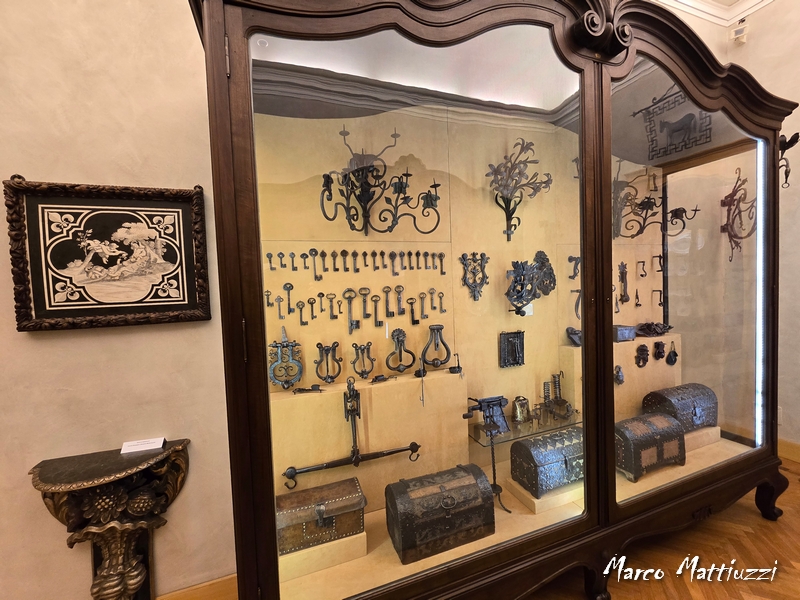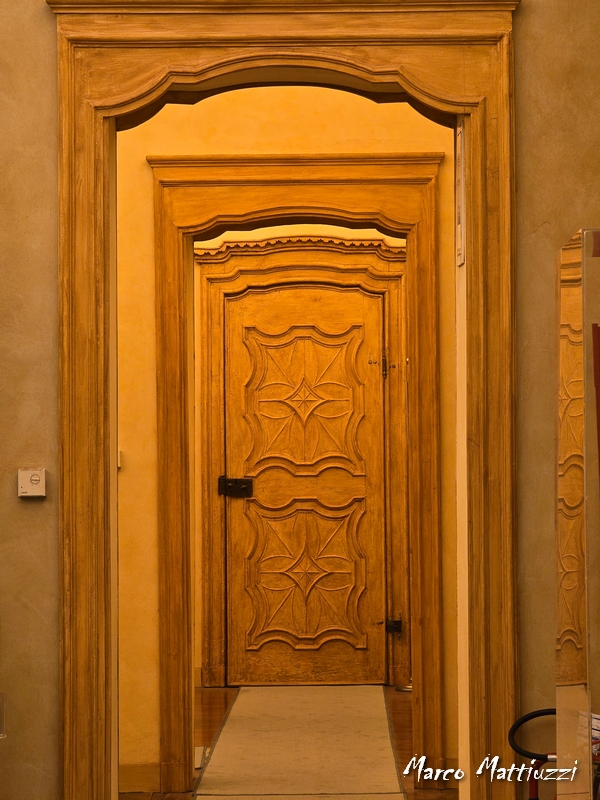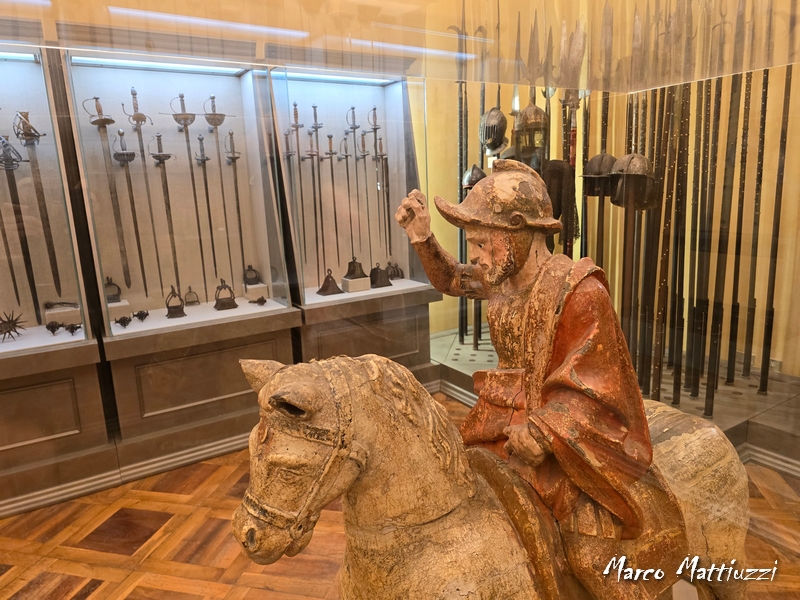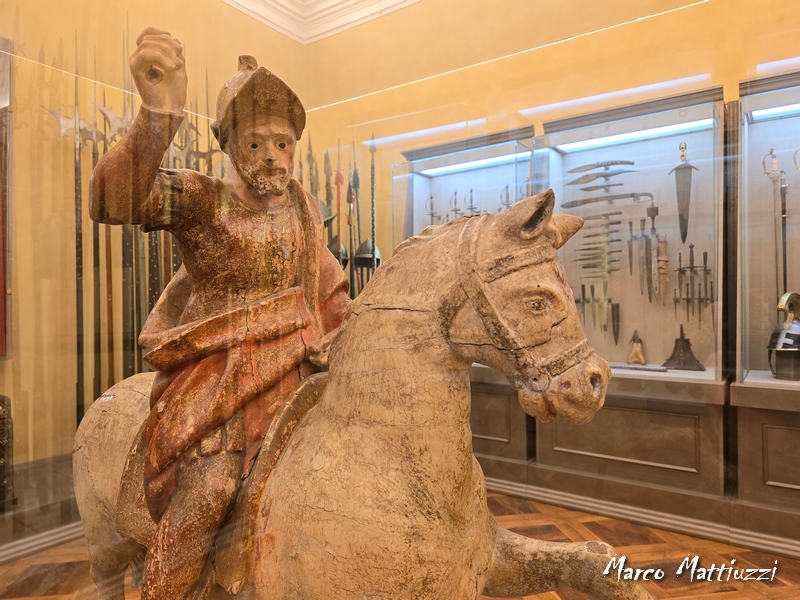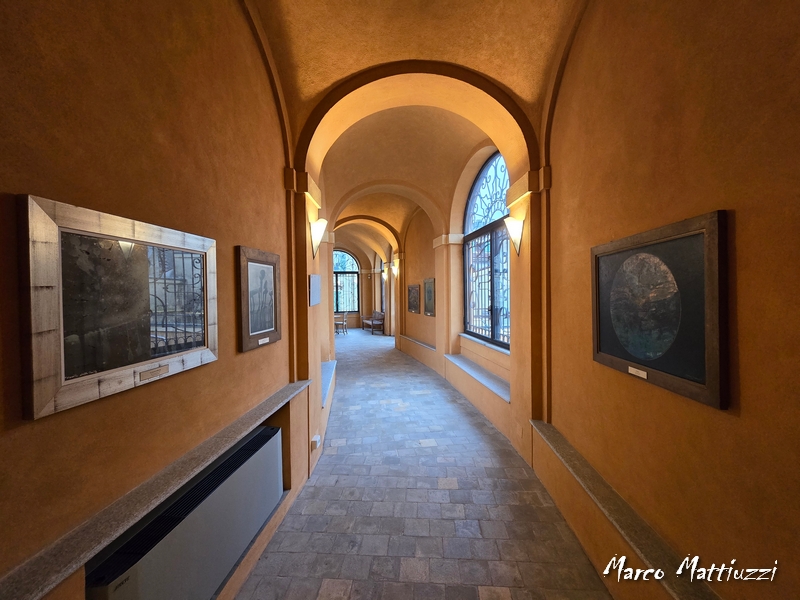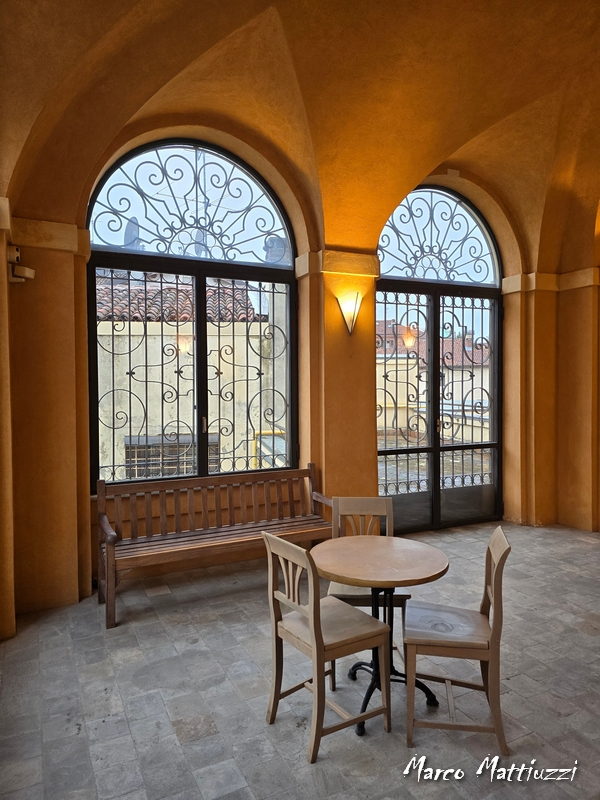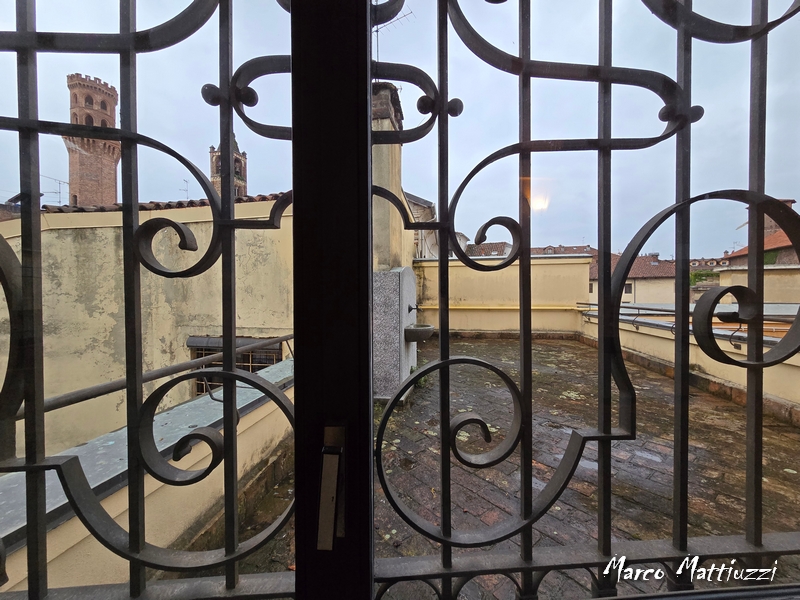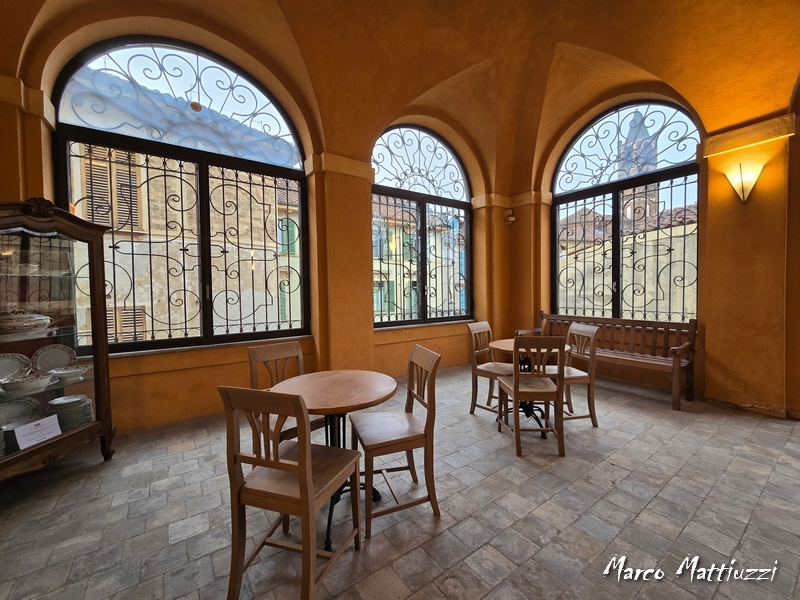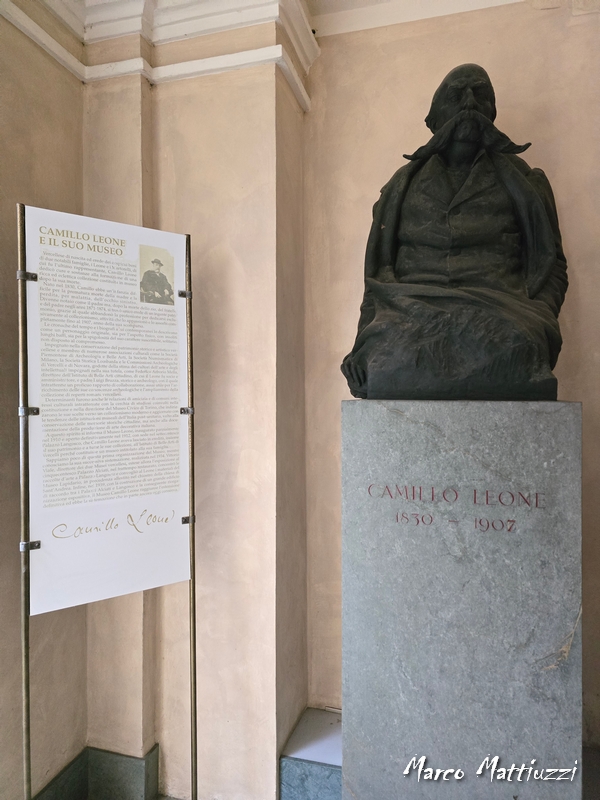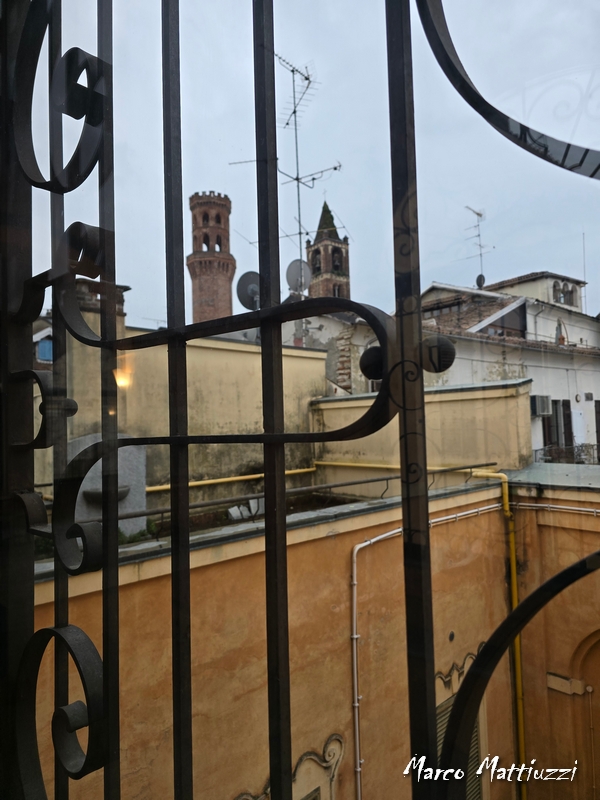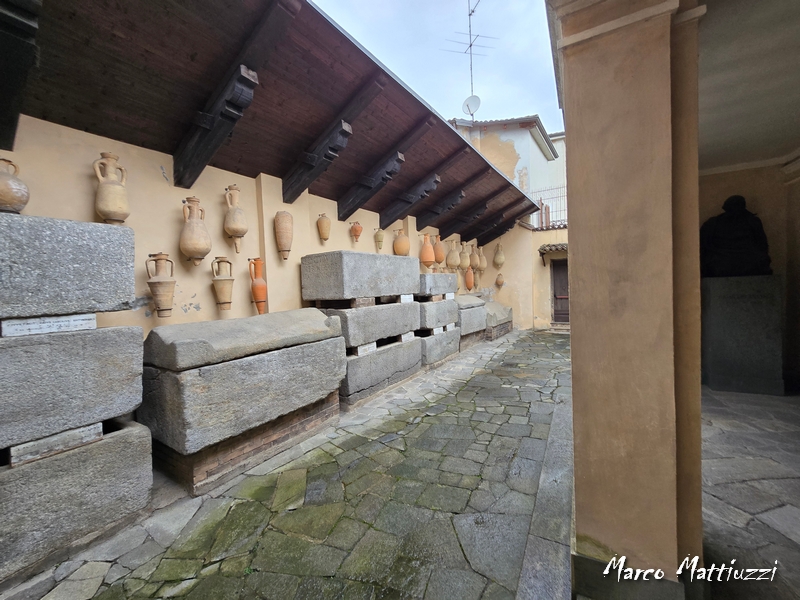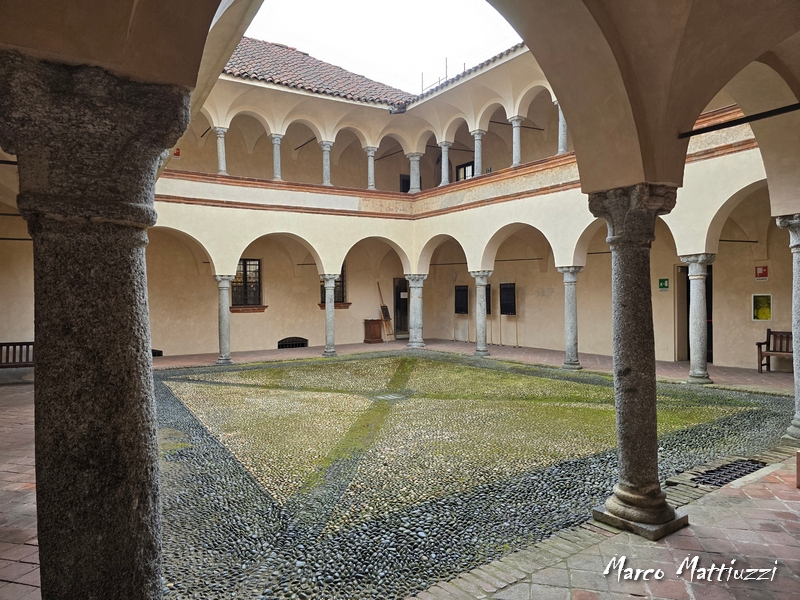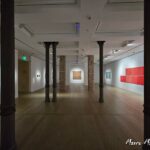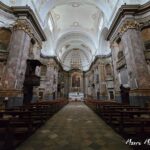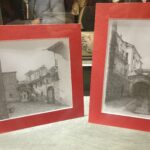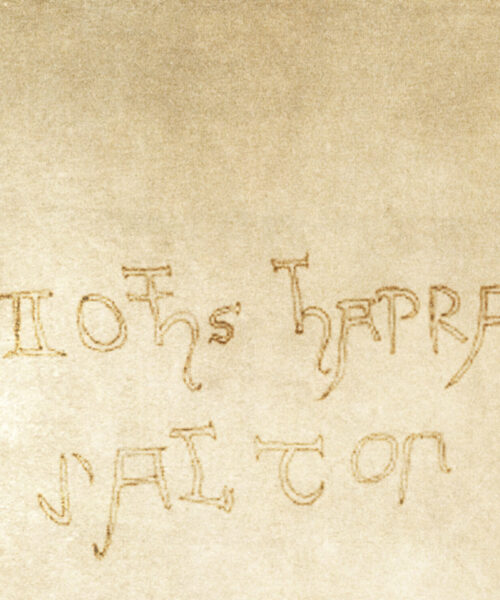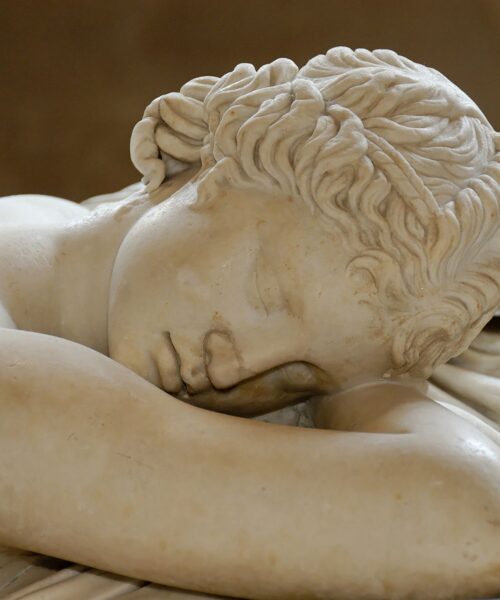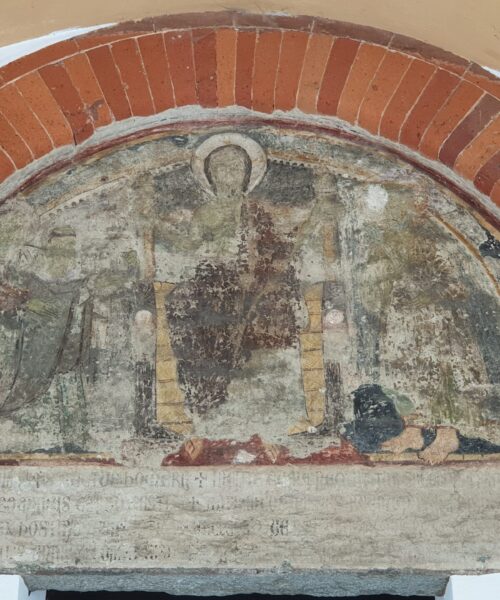It was a bright day, one of those where the air seems to shimmer with a special kind of magic, when my mother took me to Museo Leone in Vercelli for the first time. I was six, maybe seven years old, and I still vividly remember the excited heartbeat as we crossed the threshold of that seemingly enchanted place.
Today, decades later, I stand once again before that discreet, studded door that had captivated me as a child. My now more mature heart beats with the same enthusiasm as back then. I cross the threshold, immediately enveloped by a sense of nostalgia and wonder.
The short staircase leads me to the porticoed courtyard of Casa Alciati. I pause for a moment, close my eyes, and let myself be filled with memories of concerts and cultural events that often enliven this space. The perfect acoustics still echo in my ears like a distant memory, and I almost feel the notes of a piano spreading through the air.
I proceed to the “Manica di Raccordo,” the passage connecting the two historic buildings. Entering the Sala delle Colonne is like reuniting with an old friend. The tall gray columns stand majestically, and at the center, the cylindrical case still houses the ancient vase, unchanged over time. I approach and, through the glass, observe the details that had fascinated me as a child. Every scratch, every mark tells a story, and once again, I feel like an explorer in a world of wonders.
Leaving the Sala delle Colonne, I enter the grand Roman hall. Natural light filters through the large windows, creating shadow plays on the displayed artifacts. The tombstones, inscriptions, and statues speak to me of a distant past that continues to live within these walls. At the center of the room, the bronze statue of the Roman emperor greets me with the same solemnity as before. I stop to observe every detail, standing before a sarcophagus, admiring the intricate decorations, trying to imagine the lives of the people who created and used these objects.
Then I stop near one of my most vivid memories: a piece of Roman road. Ever since I was little, that stretch of ancient path had immensely fascinated me. I used to observe those smooth cobblestones and imagine endless journeys, distant places, a succession of landscapes and stories. That road transported me to a world of travelers, merchants, and legionaries, a world where every step was an adventure. I kneel to touch those cobblestones, feeling under my fingers the same freshness and solidity as back then. I close my eyes and almost hear the clatter of horse hooves and the voices of those who walked that path centuries ago.
I move on to the Crucifix Hall. I am immediately struck by its imposing presence, the sacred aura that surrounds it. I recall observing the original inside the Cathedral as a child with a mix of reverence and curiosity for that triumphant figure of Christ. I approach to see the details of this faithful copy, each vein, each mark left by time seems to tell a story of faith and devotion. The surrounding walls are adorned with fragments of ancient inscriptions, testimonies of past eras that continue to live through these relics.
From the crucifix, I move to the Mosaic Hall, where architecture and art blend into a single visual symphony. The walls are decorated with reproductions of ancient mosaics, and at the center, a triumphal arch almost seems like a portal to another dimension. The exhibited sculptures, column fragments, and bas-reliefs complete this fresco of a glorious past. I stop before a sarcophagus carved with mythological scenes, and once again, I lose myself in the details, imagining the stories engraved there.
Then, just before entering the Sala delle Cinquecentine, dedicated to conferences and temporary exhibitions, are a couple of old models, unchanged for over 50 years, representing medieval Vercelli. I never miss the chance to look at them, it was a golden age for my city, and lingering in front of them, I pay homage. Each time I see them, my heart fills with pride for the past glories and the desire to pass these stories on to future generations.
From here, I move to the section dedicated to the Risorgimento, where I immerse myself in the atmosphere of that crucial era. The rooms are filled with memorabilia and historical documents, and I carefully observe maps, paintings, and statues that tell the stories of Italian patriots.
I continue through rooms documenting other events of the early 20th century. Every corner offers a deep look at significant moments in history until a marble bust catches my eye: Giovanni Antonio Bazzi, known as ‘Il Sodoma,’ a renowned painter from Vercelli, whose figure was unjustly treated with little kindness by Giorgio Vasari in his ‘Lives of the Most Excellent Painters, Sculptors, and Architects.’ I pause before him, reflecting on his art and history.
Finally, I reach the atrium of Palazzo Langosco, where a splendid old carriage rests, now asleep. Its elegance and refined details evoke an era of splendor and sometimes difficult journeys. I stop to admire it, almost hearing the clatter of horse hooves and the rustling of reins.
Just past the carriage, I find myself before the imposing honor staircase. The baroque architecture envelops me with its elaborate decorations and precious stuccoes. I climb slowly, savoring every step, every detail. The frescoed ceiling, the finely carved balustrades, everything speaks to me of a glorious past that continues to live within these walls.
Upon reaching the noble floor, I find myself before a door leading to a series of fascinating rooms. I enter a room with rich crimson tones, lavishly decorated with ceiling frescoes and paintings adorning the walls. At the center of the room, display cases exhibit precious caskets and reliquaries, objects that tell stories of devotion and exquisite craftsmanship. The walls, covered with portraits of illustrious figures, observe me with ancient eyes, filled with wisdom and secrets.
I continue my walk and reach the ceramics room. The display cases, lined along the walls, showcase finely decorated plates and vases. Each piece is a work of art, a small masterpiece carrying traces of past lives, festive tables, and joyous dinners. I stop to observe the details, the meticulous decorations, and the vivid colors, imagining the hands that created these wonders.
From there, I move to the wrought iron room. Display cases filled with ancient locks, keys, and candelabras capture my attention. Each object is an example of craftsmanship, and I find myself thinking about the stories they could tell, who used those keys to open secret doors or light candles in ancient homes.
I pass through a series of finely carved doors, each one seeming like a frame enclosing a passage to a new world. I find myself in a room dedicated to ancient weapons, with swords and armor that tell tales of knights and battles. A statue of a mounted knight dominates the room, and I stop to admire the knight’s determined expression and the details of his armor.
I proceed and, like in a crescendo, finally arrive at the loggia. This space, with its large arched windows letting in daylight, welcomes me like an embrace. I approach one of the windows and look outside. The red rooftops of the nearby houses stretch out before me like a sea of tiles, and for a moment, I lose myself in thought. The wrought iron grates on the windows, with their intricate designs, add a touch of elegance and mystery to the view. Every detail seems to invite contemplation and introspection. The atmosphere is perfect for inspiring the work of an artist or a researcher, offering a quiet refuge away from the noise of the outside world.
I sit for a moment, letting myself be lulled by the tranquility and the atmosphere suspended in time. From this privileged position, I can observe the rooftops of the nearby houses and the medieval towers standing against the sky, a panorama that seems like a living painting, a tribute to the timeless beauty of Vercelli.
With a sense of serenity, I rise and make my way towards the exit. But before leaving the museum, I stop in front of the bust of Camillo Leone. The sculpture, with its intense gaze and imposing mustache, seems to proudly watch over this collection of “beautiful things” he lovingly gathered.
I read the plaque next to the bust, which tells the life story of this passionate collector, a man who dedicated his life to collecting and preserving fragments of history and art for the pleasure of sharing them with others. I reflect on how his vision and generosity have allowed generations of visitors to immerse themselves in this fascinating world, just as I am doing today.
Every room in the museum is a journey through time, an exploration of different eras and distant cultures. The hand of my mother, no longer by my side, is replaced by a sweet nostalgia that accompanies me on this journey through time. I pause for a moment and look back. The halls of Museo Leone appear even more beautiful to me, as if time has only increased their charm.
With one last look of gratitude, I leave Museo Leone, carrying with me not only the beauty of the works seen but also the inspiration of a man who turned his passion into a gift for the community. The sun has now set, but the warmth and light of this place continue to shine within me, like a guiding light for my love of history and art. I leave with my eyes full of images and my heart full of emotions, grateful for this return to a place that continues to enchant me, just like the first time.

